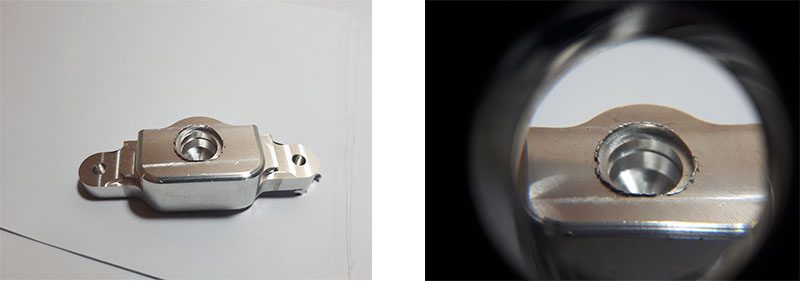Workpiece deburring method

Manual deburring
The most commonly used method for small factories is to use boring tools, sandpaper, and grinding heads as basic tools. Among them, the sickle has artificial picks and pneumatic picks.
Remarks: High labor costs, low efficiency, and it is difficult to remove the shaped pins. Scope of application: The technical requirements of the workers are not high, the burrs are small, and the structure of the parts is complicated.
Die deburring
Using a die, the mold is used to deburr the punch.
Remarks: To have a die (rough die + fine die) cost, you may need to add a set of shaping die. Scope of application: It is suitable for workpieces with more complicated parting surfaces, and the efficiency and deburring effect are better than manual.
Grinding deburring
There are many ways to grind deburring, the most common of which include: oscillation, sand blasting, and rollers.
Remarks: There are drawbacks of removing the net, and some need to manually dispose of the remaining burrs or other methods to deburr. Scope of application: suitable for small pieces with large batch size.
Frozen deburring
Use the cooling to make the surface of the burr become brittle, and then use the ejecting projectile to remove the burr.
Remarks: The equipment is about 200,000 to 300,000, which is not available to any company. Scope of application: Suitable for products with small wall thickness and small workpiece.
Hot deburring
Or called thermal energy to deburring, blasting to deburring. Some easy gases are introduced into the furnace of the equipment, and then through some medium and conditions, the gas is instantaneously blasted, and the energy emitted by the blasting is used to dissolve and remove the burrs.
Remarks: The equipment is very expensive (millions), the operator has high technical requirements, low efficiency, side effects (rust, deformation); Scope of application: used in some high-precision parts, such as precision parts such as car spacecraft .
The equipment is not very expensive (tens of thousands), the scope of application: suitable for complex spatial structure, complex and regular deburring parts.
Chemical deburring
Electrochemical principles are used to automatically and selectively deburr the parts made of metal materials.
Remarks: It is suitable for internal burrs that are difficult to remove, suitable for burrs of workpieces such as pump body and valve body (thickness less than 7 wires).
Electrolytic deburring
An electrolytic processing method that removes burrs of metal parts by electrolysis.
Remarks: The electrolyte is corrosive, and the parts around the burrs are also electrolyzed. The original gloss will be lost on the surface, which will affect the accuracy of the scale. After the workpiece is deburred, it should be cleaned and rust-proofed.
Scope of application: It is suitable for removing the burrs of the cross-holes or the disorganized parts of the hidden parts in the parts. The efficiency is high, and the deburring takes only a few seconds to several tens of seconds. It is suitable for deburring of gears, connecting rods, valve bodies and crankshaft oil passage orifices, as well as rounding of sharp corners.
Using water as the medium, it uses its instantaneous impact force to remove the burrs and flashes that appear after processing, as well as the effect of cleaning.
Remarks: The equipment is expensive, most of which are used in the heart of the car and the hydraulic control system of the engineering machine.
Ultrasonic deburring
Ultrasonic uses an instantaneous high pressure to remove burrs.
Remarks: For some micro burrs, if the burr needs a microscope to view, you can try to remove it by ultrasonic method.
